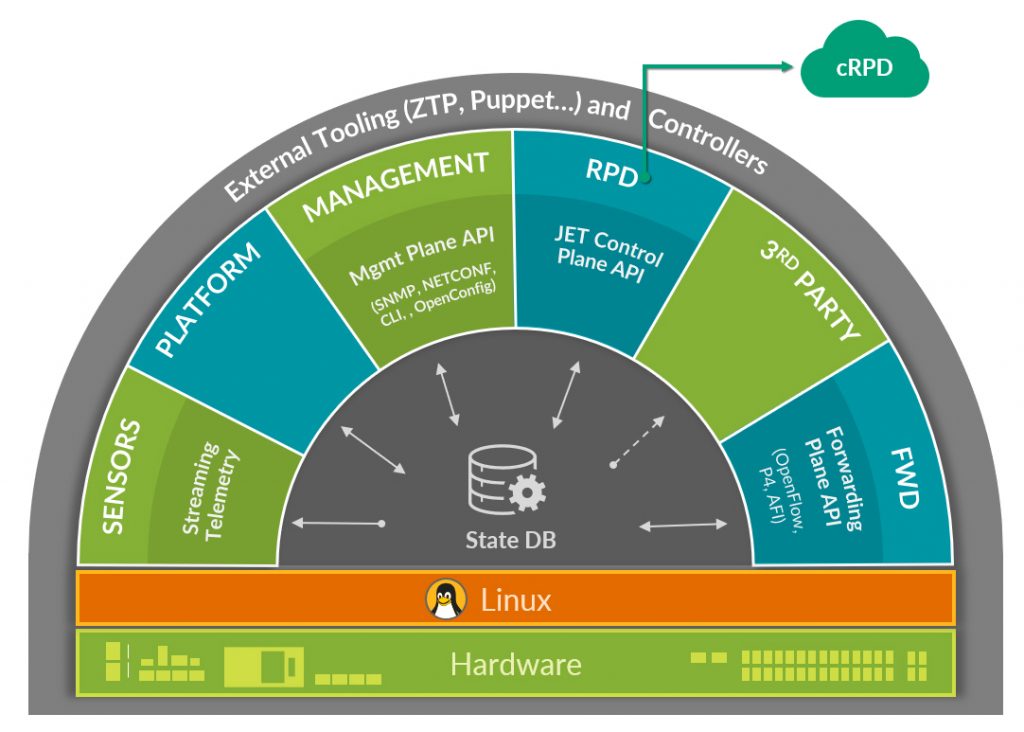Software disaggregation—the decoupling of platform software and network functions from the underlying hardware—has become somewhat of a buzzword. However, while many buzzwords tend to die out quickly, the industry has embraced the value that software disaggregation brings to customers, and more specifically, network operators.
When Juniper Networks embarked on the journey to modernize its Junos operating system, network operators had clear-cut expectations for significant benefits that they could derive:
- Improved availability. High resiliency and increased robustness improve system availability.
- Operational efficiency. The Linux-centric natures of the software disaggregation model lead to greater operational efficiencies.
- Accelerated innovation. The faster pace allows network operators to see new features implemented in their networks, while customers can see faster turnaround through incremental updates.
- Modularity results in high resilience in the system, as specific components can be upgraded without impacting the rest of the system. The reliability reduces downtime, allowing businesses to run more efficiently.
This architecture was designed and built to be adaptable to meet existing and future requirements through incremental development without compromising existing functionality. Greater efforts such as this one require multiple incremental development steps to achieve the goals. Each increment allows for new features and new use cases.
Cloud Providers
Our software disaggregation plan and strategy will drive value to cloud providers in the long term. The rich programmability and telemetry, in addition to modularity, allows our customers to onboard future applications in a much simpler manner.
A big differentiator going forward is how our customers plan to use the Junos ecosystem. The cloud environment is constantly evolving and our software is flexible and adaptable to support new use cases that may not exist today. At Juniper, we’re working with our cloud customers to see how their designs and deployments evolve and how they take these deployments and incorporate them into the applications that we provide.
RPD
Disaggregation of routing protocol daemon, or RPD is one of the most unique developments that has come from this process. Once there was a clean abstraction from the rest of the routing platform, an opportunity arose for RPD outside the routing platform.
One of the byproducts of software disaggregation involves taking business logic from the software and providing it as independent software. With RPD, the routing applications are taken out of the Junos ecosystem, packaged as a container and run in a native Linux environment or inside the Junos environment. This creates opportunities for customers to use the software in their own environments, be it cloud-native or in a Linux ecosystem.
Juniper’s Secret Sauce
Many vendors today claim some level of software disaggregation. Our implementation is based on industry accepted standards, but there are a few things that set us apart: 
- The ability to build large scale-up systems using the concept of clustering that is built into Juniper’s software infrastructure
- Our applications, which have been battle-hardened over the past 20 years, are feature-rich and have the ability to run in the new infrastructure as-is. Juniper brings a maturity of software that our customers are accustomed to with Junos routing and other functions.
The Junos architecture was built to be adaptable to meet existing and future requirements of network operators and cloud providers through incremental development without compromising existing functionality. That, combined with the improved system availability, operational efficiency, accelerated innovation and modularity the Junos software brings to customers is what truly sets us apart.
For more information on the impact of software disaggregation, view the Driving Network Simplicity with Software Disaggregation vlog and the Open Networking solutions page.

























